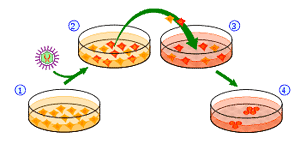In an extraordinary feat of science, Japanese scientists have used induced stem cells to grow into a liver-like tissue in a dish. The researchers have a long way ahead of them before they can grow livers safe for human transplants, which is the main goal, however even at its current stage, the tissue grown by the researchers can satisfy rudimentary metabolic functions and marks a breakthrough in the field.
“It blew my mind,” said George Daley, director of the stem-cell transplantation programme at the Boston Children’s Hospital in Massachusetts, who chaired the session. “It sounds like a genuine advance,” says Stuart Forbes, who studies liver regeneration at the University of Edinburgh, UK
In the US alone, there are 17,000 people currently on the official national waiting list for a liver transplant. Many patients are in a critical situation and are in dire need of a transplant; considering the median waiting period if of one year, for most it’s too late. Lab grown organs, which are stable and compatible with the patient, would save thousands of lives each year.
The work was presented by Takanori Takebe, a stem-cell biologist at Yokohama City University in Japan, at the annual meeting of the International Society for Stem Cell Research in Yokohama last week.
Takebe and his team re-programmed human skin cells to an embryo-like state to create induced pluripotent stem cells (iPS). These human pluripotent stem cells are crucial for the development of regenerative medicine, which can basically allow for growing a whole new heart or liver, since they can be converted into any cell type in the body. The stem cells were then placed in a dish and after nine days, analysis showed that they contained a biochemical marker of maturing liver cells, called hepatocytes.
Next, Takebe added two more types of cell known to help to recreate organ-like function in animals: endothelial cells, which line blood vessels, taken from an umbilical cord; and mesenchymal cells, which can differentiate into bone, cartilage or fat, taken from bone marrow. In a mere 5 days, the cells assembled into a 5-millimetre-long, three-dimensional tissue that the researchers labelled a liver bud — a extremely rudimentary liver tissue, of the organ’s early development stage.
The tissue has blood vessels that proved functional when it was transplanted under the skin of a mouse. Genetic tests show that the tissue expresses many of the genes expressed in real liver, and tests on mice which had the tissue transplanted showed that it was able to metabolize some drugs that human livers metabolize but mouse livers normally cannot.
The team claims that its work is “the first report demonstrating the creation of a human functional organ with vascular networks from pluripotent stem cells”.
Takebe and his team’s work is definitely groundbreaking in their findings, however there is still much more that awaits to be studied and experimented before a fully functional stem cell liver can be grown. For this extremely rudimentary liver tissue, the scientists needed over a year and hundreds of trials to properly time the addition of the other two cell types. In the meantime, the scientists hope that his liver bud could be useful for toxicity testing in drug screening, for which bile ducts are not needed.
The findings, so far, are expected to be published in the journal Nature soon.










